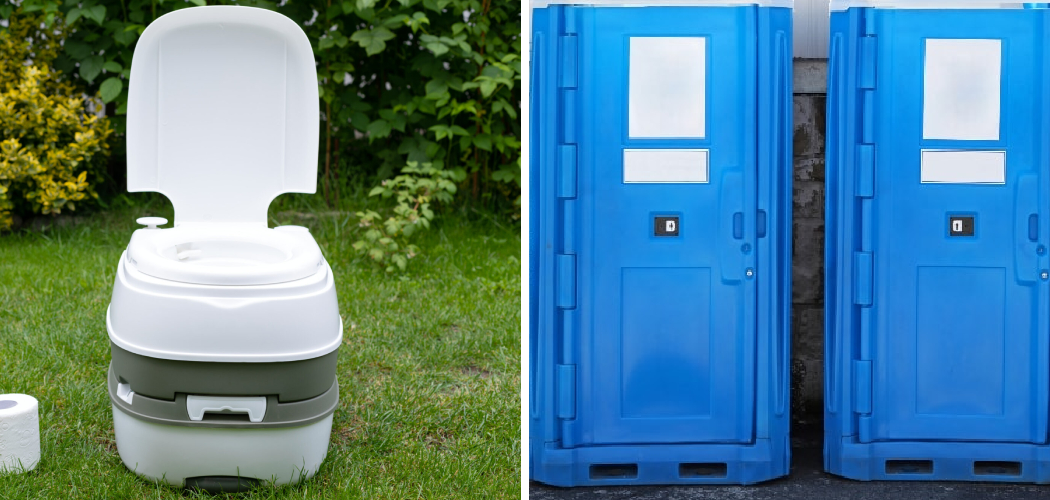Are you going on a camping trip or attending an outdoor event without traditional toilet facilities? Portable toilets can provide a quick and convenient solution for your bathroom needs. However, using them effectively requires some know-how to ensure cleanliness, hygiene, and safety.
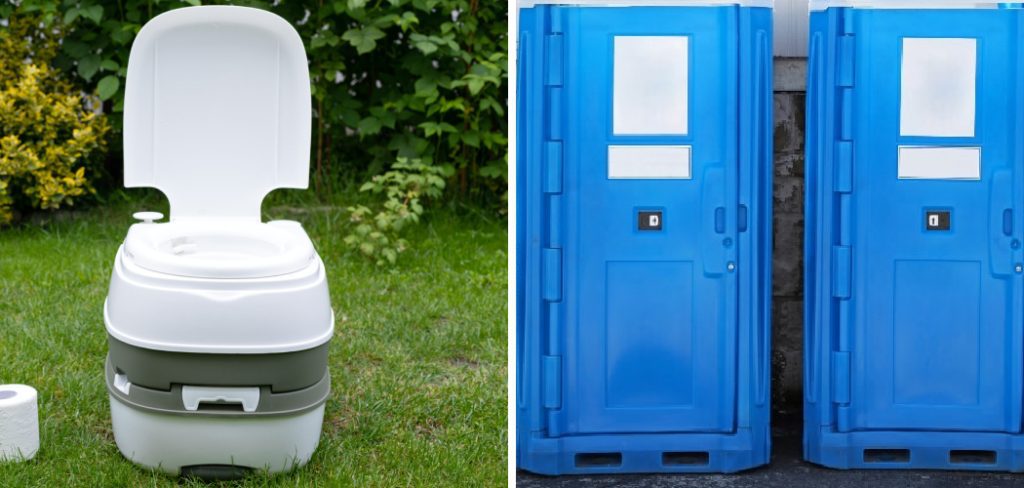
Using a portable toilet may not be the most glamorous part of any outdoor adventure or event, but knowing how to use a portable toilet effectively can make the experience more hygienic and comfortable for everyone involved. Whether you’re camping, attending a festival, or working on a construction site, understanding the proper techniques and etiquette for using a portable toilet is essential.
This guide will walk you through the steps to ensure cleanliness, minimize environmental impact, and respect others who will use the facility after you.
What Are the Benefits of Using a Portable Toilet?
Portable toilets provide many benefits, making them an essential facility in outdoor settings. Some of the advantages include:
- Convenience: Portable toilets are designed to be easily transported and set up in various locations, making them convenient for outdoor events or remote work sites.
- Hygiene: These facilities come equipped with hand sanitizers and other products to ensure proper hygiene while using the toilet.
- Environmentally Friendly: Most portable toilets are made from recycled materials and have eco-friendly waste disposal methods, reducing their environmental impact.
- Cost-effective: Renting or purchasing a portable toilet can be more cost-effective than building traditional restroom facilities in areas where they may not be needed permanently.
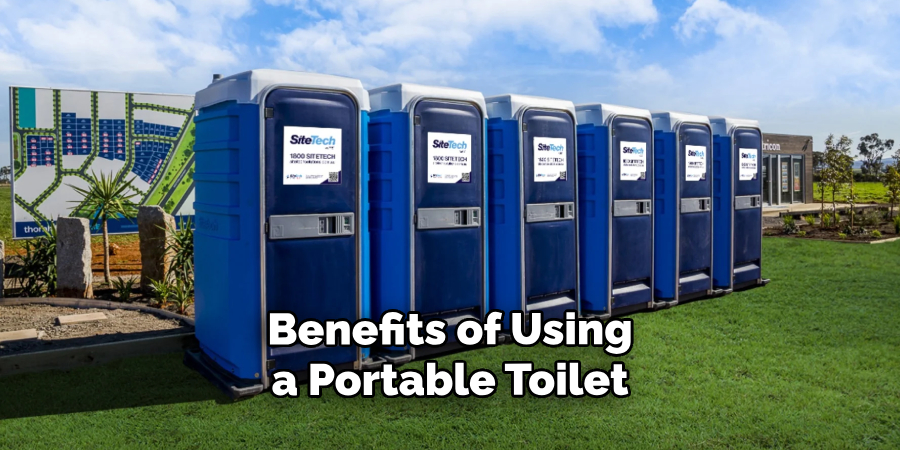
These are just a few benefits of using a portable toilet, making it a popular and practical choice for outdoor events and activities.
What Will You Need?
Before using a portable toilet, gathering the necessary items is essential to ensure a comfortable and hygienic experience. These may include:
- Toilet Paper: While most portable toilets come stocked with toilet paper, it’s always a good idea to bring extra in case it runs out.
- Hand Sanitizer: As mentioned before, most portable toilets have hand sanitizers available, but having your own supply is a good idea for added cleanliness.
- Wet Wipes: Wet wipes can be useful for cleaning the seat or any spills that may occur while using the toilet.
Once you have these items, you’re ready to use the portable toilet.
10 Easy Steps on How to Use a Portable Toilet Effectively
Step 1. Inspect the Toilet Area:
Before entering the portable toilet, take a moment to inspect the surrounding area. Ensure that the toilet is on stable ground to avoid any accidental tipping or instability during use. Check for any visible signs of damage, such as cracks in the plastic structure or issues with the door latch, as these could impact your comfort or safety. Make a note of nearby supplies or amenities, such as a handwashing station or additional hand sanitizer dispensers, which can be useful during or after using the facility. By assessing the area first, you can ensure a smoother and more pleasant experience.
Step 2. Prepare Your Supplies:
Gather all the essential supplies you may need before entering the portable toilet. This includes items like toilet paper, hand sanitizer, wet wipes, or any sanitary products you might require. Having everything ready in advance ensures you won’t need to scramble for anything midway and can minimize the time spent inside the facility. Additionally, consider placing these items within easy reach, such as in a pocket or small bag, to make the process more convenient. Proper preparation contributes to a more efficient and hygienic experience.
Step 3. Use the Facility Efficiently:
Once inside the portable toilet, aim to conduct your business as swiftly and efficiently as possible. Be mindful of keeping the space clean and respectful for the following user by
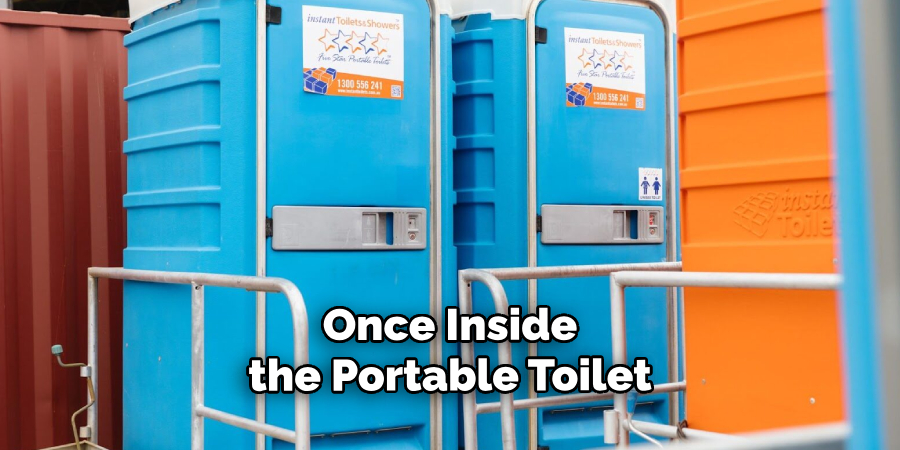
disposing of waste properly and avoiding unnecessary mess. Use the provided trash receptacles if available for any disposable items and ensure the seat or surrounding area is left tidy. This improves hygiene and contributes to a more considerate experience for everyone.
Step 4. Sanitize and Exit:
Before exiting the portable toilet, take a moment to sanitize your hands thoroughly using soap and water if provided, or a personal hand sanitizer. Proper hand hygiene is crucial in preventing the spread of germs and ensuring your well-being. After sanitizing, ensure the door is securely closed behind you to maintain privacy and cleanliness for the next user. Being mindful of these steps helps create a safer and more pleasant environment for everyone.
Step 5. Report Any Issues:
If you notice any problems with the portable toilet, such as lack of supplies, damage, or unsanitary conditions, report the issue to the appropriate facility management or event staff. Prompt reporting ensures that the issue can be addressed quickly, maintaining a comfortable and hygienic experience for all users. Taking this step demonstrates consideration for others and contributes to the overall upkeep of the facilities.
Step 6. Use Responsibly:
When using a portable toilet, be considerate of others by disposing of waste materials properly. Avoid flushing any inappropriate items, such as paper towels or trash, as this can cause blockages and impact the unit’s functionality.
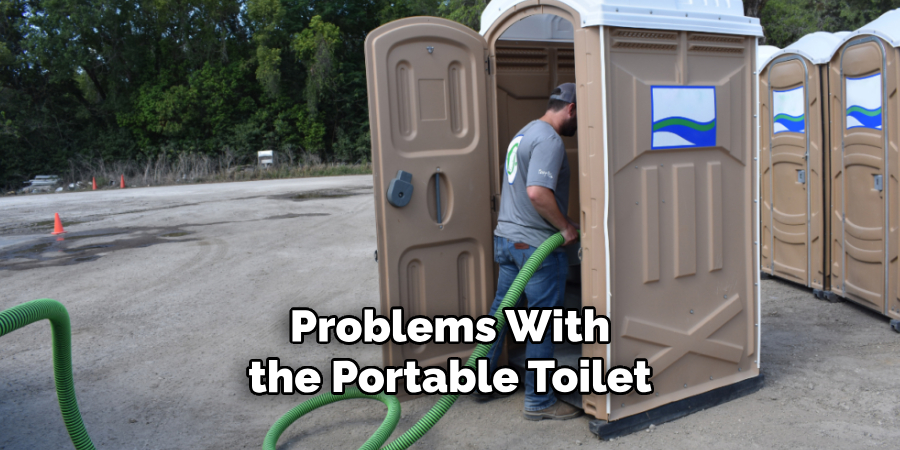
Follow posted instructions or guidelines, if any, to ensure the toilet remains usable for everyone. Being responsible in your usage helps maintain cleanliness and prevents unnecessary inconvenience for others.
Step 7. Practice Good Hygiene:
Always practice proper hygiene after using a portable toilet by washing or sanitizing your hands thoroughly. Most portable toilets are equipped with hand sanitizer dispensers or are paired with handwashing stations nearby. Keeping your hands clean protects your health and helps prevent the spread of germs to others. Prioritizing hygiene ensures a safer and more pleasant environment for everyone.
Step 8. Keep the Surrounding Area Clean:
When using a portable toilet, keeping the surrounding area clean and free from litter or waste is essential. Properly dispose of any trash, such as paper towels or packaging, in designated bins rather than leaving them on the ground. If no trash bin is available, carry the waste with you until you can dispose of it properly. Ensuring the area remains tidy not only maintains the environment but also shows respect for others who will use the facility after you. A clean surrounding area helps prevent unpleasant odors and reduces the likelihood of attracting pests, contributing to a more enjoyable experience for everyone.
Step 9. Dispose of Sanitary Products Properly:
Proper disposal of sanitary products is crucial for maintaining cleanliness and preventing plumbing or environmental issues. Items such as feminine hygiene products, wipes, or diapers should never be flushed down the toilet, as they can clog the system and cause significant damage. Instead, use designated disposal bins often provided within portable toilet facilities. If a bin is unavailable, securely wrap the item and store it in a sealable bag until you can discard it in an appropriate waste receptacle. Taking these small but essential steps, you help ensure the facility remains functional, sanitary, and considerate for the next user. Additionally, proper disposal contributes to environmental preservation and reduces unnecessary waste-related complications.
Step 10. Always Wash Your Hands:
Hand hygiene is one of the most important practices when using portable toilet facilities. After using the restroom, always wash your hands thoroughly with soap and water if available. If soap and water are not accessible,
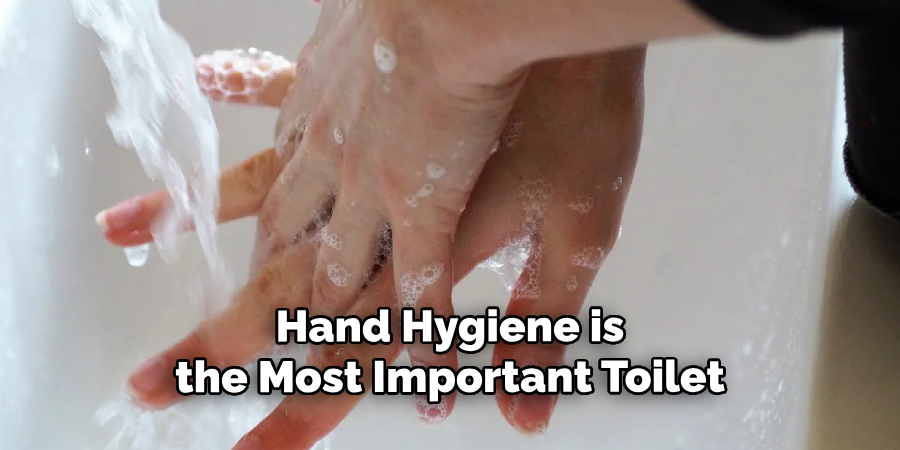
use a hand sanitizer with at least 60% alcohol to effectively clean your hands. This step reduces the spread of germs and bacteria, protecting yourself and others from potential illnesses. Prioritizing hand hygiene promotes personal health and contributes to a cleaner and safer environment for everyone using the facilities.
Following these simple steps ensures a more pleasant and hygienic experience when using portable toilets.
5 Things You Should Avoid
- Skipping Proper Sanitization: Avoid sanitizing your hands before and after using the portable toilet. Many facilities provide sanitizer or handwashing stations, so take advantage of them to maintain hygiene.
- Overloading the Toilet: Do not overfill the toilet with excessive toilet paper or other waste. This can cause blockages and create an unpleasant experience for the following user.
- Ignoring Ventilation: Leaving the lid open after use can create unpleasant odors inside the unit. Always close the lid properly to keep the bathroom fresh for others.
- Flushing Prohibited Items: Avoid disposing of items like wipes, feminine hygiene products, or trash in the portable toilet, as they can damage the system and lead to maintenance issues.
- Leaving It Unclean: Do not leave the portable toilet messy for the following user. Be sure to clean up and dispose of waste properly to ensure a clean and pleasant experience.
By avoiding these behaviors, you can contribute to a smoother and more enjoyable experience for yourself and others when using portable toilets.
Conclusion
How to use a portable toilet effectively requires a combination of mindfulness, etiquette, and responsible behavior.
By following proper hygiene practices, avoiding common pitfalls such as overloading or improperly disposing of items, and maintaining cleanliness for the next user, you contribute to a more comfortable and sanitary experience for everyone. A little consideration goes a long way in ensuring portable toilets remain functional and pleasant to use in any setting.
Hopefully, this guide has provided valuable tips and reminders for using portable toilets effectively. Happy toileting!

